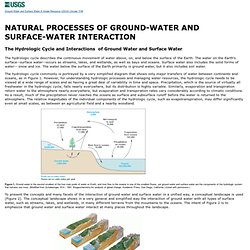

British_isles_802.jpg (JPEG Image, 1076×1127 pixels) - Scaled (64. Breathingearth - CO2, birth & death rates by country, simulated real-time. Earthlights. The image is a panoramic view of the world from the new space station. It is an absolutely awesome picture of the Earth taken from the Boeing built Space Station last November on a perfect night with no obscuring atmospheric conditions. It is a night photo with the lights clearly indicating the populated areas. You can scroll East-West and North-South. Note that Canada's population is almost exclusively along the U.S. border. Moving east to Europe, there is a high population concentration along the Mediterranean Coast. Video. World_rel_803005AI_2003.jpg (JPEG Image, 5334×2960 pixels) - Scaled (24. What Is Globalization?
Finally, a definition of globalization that one can understand and to which we now can relate: Question: What is the truest definition of Globalization?

Answer: Tragically, Princess Diana’s death. Question: Why? An English princess with an Egyptian boyfriend crashes in a French tunnel, driving a German car with a Dutch engine, driven by a Belgian who was drunk on Scottish whiskey, followed closely by Italian paparazzi on Japanese motorcycles; treated by an American doctor, using Brazilian medicines. This is sent to you by an American, using Bill Gate’s technology and you are probably reading this on your computer, that uses Taiwanese chips and a Korean monitor, assembled by Bangladeshi workers in a Singapore plant; transported by Indian lorry-drivers, hijacked by Indonesians, unloaded by Sicilian longshoremen and trucked to you by illegal Mexican workers… And that is what Globalization is. ~ source unknown ~
Emergency and Disaster Information Service. Time_95.jpg (JPEG Image, 2719×1454 pixels) - Scaled (49. Strong quakes rattle remote Antarctica. Two strong earthquakes 40 minutes apart rocked the remote South Orkney Islands in Antarctica on Sunday, experts from the US Geological Survey said.

The epicenter of the first, a magnitude 6.6 temblor, was at a depth of 10 kilometers (six miles), some 539 kilometers (334 miles) west of Coronation Island, the USGS said. No destructive tsunami was created, according to a US-based warning center. The first quake occurred at 1340 GMT. About 40 minutes later the region was struck by an aftershock measured at 6.2. A second 5.1-magnitude aftershock occurred at around 1640 GMT, USGS said later. Novel technique reveals how glaciers sculpted their valleys. The beautiful and distinctive U-shaped glacial valleys typical of alpine areas from Alaska to New Zealand have fascinated and frustrated geologists for centuries.

While it seems obvious that glaciers scoured the bedrock for millions of years, what the landscape looked like before glaciers appeared, and how the glaciers changed that landscape over time, have remained a mystery. The glaciers erased all the evidence. Now, University of California, Berkeley, and Berkeley Geochronology Center (BGC) scientists have employed a clever technique to reconstruct the landform history of a 300-square-mile area of Fiordland in New Zealand, from the early Pleistocene some 2.5 million years ago, when the world cooled and glaciers formed, through today’s warmer interglacial period.
“The first question we asked was, how much of the current landscape and relief is a result of glacial erosion?” How Volcanoes Work. 435715main_atlantic20100325-full.jpg (JPEG Image, 2000×1000 pixels) - Scaled (68%) Moving slabs [This Dynamic Earth, USGS] The layer of the Earth we live on is broken into a dozen or so rigid slabs (called tectonic plates by geologists) that are moving relative to one another.
![Moving slabs [This Dynamic Earth, USGS]](http://cdn.pearltrees.com/s/pic/th/moving-slabs-dynamic-earth-14847539)
"Historical perspective" Time Zones. Geology of the Parks.
Photos. Maps. Biomes. Videos. WHERE THE FUCK SHOULD I GO FOR DRINKS? Home Page. Geographic.org home page - Geography, climate, countries, Maps, Flags, Population. Introduction to Earth Sciences I. Introduction to Earth Sciences I Topic 1 The Earth's Macroscopic Properties and What They Can Tell Us To get some very basic descriptions of the Earth we will start by describing some of the simplest of all the Earth's properties - how big, how heavy, how hot, how strong - and how they were deduced.

The other world visitor would be remiss if he he did not at least provide a description of those properties. 1.1 The Earth's Size and Shape Centuries ago people had very little idea about the total size of the Earth and hardly any notion of its shape. One of the earliest attempts to estimate the Earth's size was done by Eratosthenes about 200 B.C. If the Earth were flat the "sun angle" would be the same everywhere. If the Earth is round then the "sun angle" would change and he reasoned that the amount of sun angle change had to have something to do with the Earth's total size. Because of this he knew about angles. Mini-Quiz: Forward and Inverse Thinking. Hydrologic Cycle and Interactions. Ground Water and Surface Water A Single Resource--USGS Circular 1139 The Hydrologic Cycle and Interactions of Ground Water and Surface Water The hydrologic cycle describes the continuous movement of water above, on, and below the surface of the Earth.

The water on the Earth's surface--surface water--occurs as streams, lakes, and wetlands, as well as bays and oceans. Surface water also includes the solid forms of water-- snow and ice. S. Smithsonian Institution.